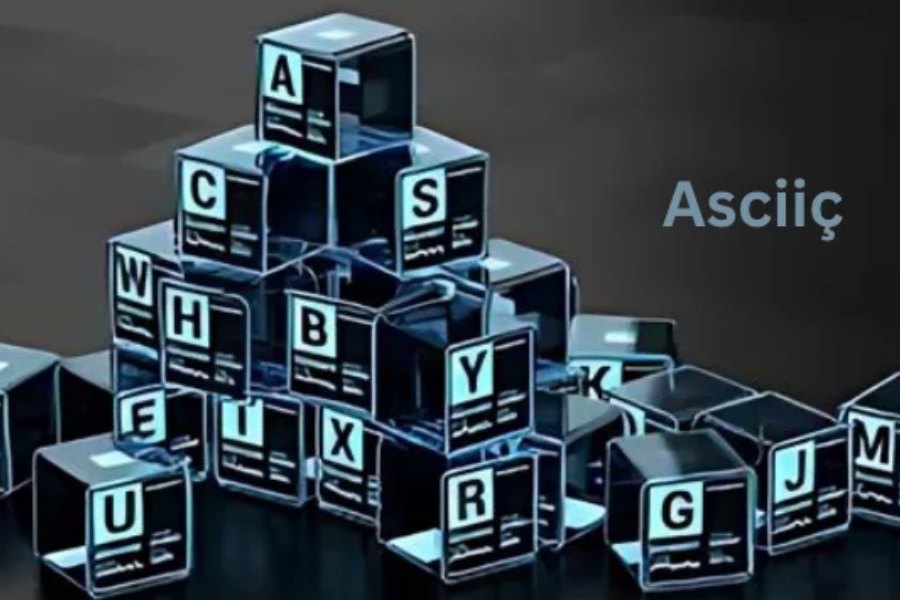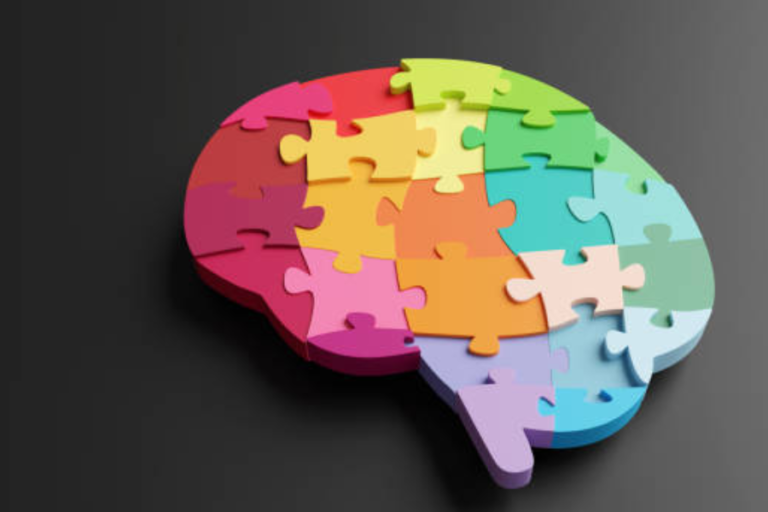Exploring ASCII: The Fascinating World of Character Encoding
Introduction
In the realm of digital communications, character encoding is the key that unlocks the ability for computers to interpret and process text accurately. Among the earliest and most influential encoding schemes is ASCII (American Standard Code for Information Interchange), a standard that played a pivotal role in shaping how computers handle text. In this article, we will delve into the world of ASCII, exploring its origins, structure, applications, and enduring significance in modern computing.
What is ASCII?
ASCII, short for American Standard Code for Information Interchange, is a character encoding standard that allows text to be represented electronically. It serves as a bridge between human-readable text and the binary language that computers understand. By assigning a unique numerical value to each character, ASCII enables computers to store, manipulate, and display text efficiently.
The History of ASCII
The journey of ASCII began in the early 1960s when the American National Standards Institute (ANSI) sought to create a unified character encoding standard. Before ASCII, there were numerous incompatible character encoding systems, making it challenging for different computer systems to communicate effectively. ASCII was developed as a solution to this problem, providing a standardized way to represent text across various platforms.
ASCII quickly became the de facto standard for text representation, allowing different systems to exchange information seamlessly. Its adoption was driven by the need for compatibility in an era when computers were becoming increasingly interconnected. ASCII’s simplicity and efficiency made it an ideal choice for early computing systems with limited resources.
Structure and Design of ASCII
At its core, ASCII is a 7-bit binary code that can represent up to 128 unique characters. Each ASCII character is assigned a specific numerical value, which corresponds to its binary representation. For example, the uppercase letter ‘A’ is represented by the decimal value 65, which translates to the binary code 01000001.
The design of ASCII is both elegant and efficient. Its 7-bit structure was well-suited to the memory and processing limitations of early computer systems. By using a compact binary code, ASCII minimized the amount of storage space required for text, making it an ideal choice for resource-constrained environments.
ASCII Character Set
The ASCII character set is divided into three main categories:
- Control Characters (0-31): These are non-printable characters used for controlling devices like teletypes and printers. Examples include the carriage return (CR) and line feed (LF) characters, which are essential for formatting text.
- Printable Characters (32-126): This category includes letters (both uppercase and lowercase), digits, punctuation marks, and the space character. These characters are crucial for text processing and display.
- Special Character (127): The ASCII character set also includes a special character known as the delete character (DEL). While rarely used today, it was originally designed to erase characters on punched tape, a popular storage medium in the early days of computing.
Applications of ASCII
ASCII has found applications in various domains of computing, including:
- Text Files: ASCII encoding is widely used in plain text files, ensuring compatibility across different systems. Text files encoded in ASCII can be easily transferred and edited, making them a popular choice for data interchange.
- Programming: Many programming languages, such as C and Python, rely on ASCII to represent text and symbols. ASCII’s simplicity and universality make it an ideal choice for writing code that can be executed on different platforms.
- Internet Protocols: ASCII has been used extensively in internet protocols to encode text-based data. For example, HTTP headers, email headers, and URLs are often represented using ASCII characters to ensure compatibility and readability across networks.
- Data Communication: ASCII plays a vital role in data communication protocols, ensuring that devices on both ends of a communication link can correctly interpret and process text data.
ASCII in Modern Computing
Despite the emergence of more complex character encoding standards like Unicode, ASCII remains relevant in modern computing. Its simplicity and efficiency make it an attractive choice for applications where memory and processing power are limited. Additionally, many modern encoding standards, including Unicode, are backward-compatible with ASCII, ensuring that ASCII-encoded text can be seamlessly integrated into a wide range of systems.
Advantages of ASCII
- Simplicity: ASCII’s straightforward design makes it easy to implement, reducing the complexity and cost of hardware and software.
- Interoperability: ASCII is universally supported, allowing text encoded in ASCII to be processed correctly by virtually any system.
- Efficiency: The compact representation of ASCII minimizes memory usage and processing overhead, making it well-suited to resource-constrained environments.
Limitations of ASCII
While ASCII has many advantages, it also has limitations:
- Limited Character Set: ASCII’s 7-bit design restricts it to representing only 128 characters, which is insufficient for languages with larger character sets.
- No Multilingual Support: ASCII is primarily designed for English text and does not support characters from other languages, limiting its usefulness for international communication.
Extended ASCII and Beyond
To address the limitations of ASCII, an extended version known as Extended ASCII was developed. Extended ASCII expands the character set to 8 bits, allowing for up to 256 characters. This extended set includes additional characters for languages and symbols not covered by the original ASCII standard. However, even with these additions, Extended ASCII still falls short when compared to more comprehensive encoding standards like Unicode.
Unicode: The Next Generation of Character Encoding
Unicode was developed to address the need for a character encoding standard that could represent characters from most of the world’s writing systems. Unlike ASCII, which is limited to 128 characters, Unicode can represent over a million unique characters, making it the go-to standard for modern computing.
Unicode uses variable-length encoding, such as UTF-8, to represent characters. This allows it to accommodate a vast range of characters while remaining compatible with ASCII. Today, Unicode is the standard for encoding text in a wide variety of languages and scripts, ensuring that digital communication is truly global.
ASCII Art: Creativity with Characters
ASCII art is a form of visual art that uses characters from the ASCII character set to create images and designs. Artists use letters, digits, and symbols to depict intricate patterns and shapes, often with impressive detail. ASCII art became popular in the early days of computing when graphical displays were limited, and it continues to be appreciated for its creativity and nostalgia.
ASCII in Network Protocols
Many networking protocols rely on ASCII representations for text data. For example, HTTP headers, email headers, and URL encoding use ASCII characters to maintain compatibility and readability across different systems and networks. ASCII’s role in these protocols ensures that text-based data can be transmitted and understood accurately, regardless of the underlying hardware or software.
Most Used ASCII Codes and Their Uses
Some of the most commonly used ASCII codes include:
- 32 (Space): The space character is essential for separating words and formatting text.
- 33 (!): The exclamation mark is a common punctuation symbol used to express emphasis or surprise.
- 65-90 (A-Z): These codes represent uppercase letters, forming the basis of English text.
- 97-122 (a-z): These codes represent lowercase letters, complementing their uppercase counterparts.
- 48-57 (0-9): These codes represent digits, used for numerical data.
- 13 (CR): The carriage return character moves the cursor to the beginning of the line.
- 10 (LF): The line feed character moves the cursor down to the next line.
The Future of Character Encoding
While Unicode is the dominant character encoding standard today, ASCII continues to influence modern computing. Its legacy is evident in the way text is transmitted and represented, serving as a foundation for newer standards. As technology continues to evolve, new encoding standards may emerge, but the principles established by ASCII will likely remain relevant for years to come.
Conclusion
ASCII has been a cornerstone of digital communication, enabling computers to process and interpret text with precision. Although it has limitations, its simplicity and efficiency have ensured its continued relevance in modern computing. Understanding ASCII not only provides insight into the history of computing but also highlights the importance of standardization in technology. As we move forward, ASCII’s influence will persist, reminding us of the foundational role it played in shaping the digital world.
Summary:
ASCII (American Standard Code for Information Interchange) is a foundational character encoding standard that enables computers to interpret and process text. Developed in the early 1960s by the American National Standards Institute (ANSI), ASCII became a pivotal standard for text representation across different computing systems. ASCII uses a 7-bit binary code to represent up to 128 characters, including control characters, printable characters, and a special delete character. While limited in its character set, ASCII’s simplicity and efficiency made it ideal for early computing environments and it remains relevant today, especially in programming, data communication, and text file representations. Modern standards like Unicode have expanded on ASCII’s foundation, offering broader support for global languages, yet ASCII’s influence continues to shape the digital world.
Facts:
- Origin: ASCII was developed by ANSI in the early 1960s to standardize character encoding across different computing systems.
- Character Set: ASCII is a 7-bit binary code that represents 128 unique characters, including control and printable characters.
- Simplicity: ASCII’s straightforward design made it well-suited for early computers with limited memory and processing power.
- Applications: ASCII is widely used in text files, programming, internet protocols, and data communication.
- Legacy: Despite the rise of Unicode, ASCII remains relevant due to its efficiency and backward compatibility with modern standards.
FAQs:
- What is ASCII?
ASCII, or American Standard Code for Information Interchange, is a character encoding standard that allows text to be represented electronically in computers. - Why was ASCII created?
ASCII was created to standardize the representation of text across different computing systems, ensuring compatibility and efficient communication. - How many characters does ASCII support?
ASCII supports 128 unique characters using a 7-bit binary code. - What is the difference between ASCII and Unicode?
ASCII is limited to 128 characters and is primarily designed for English text, while Unicode can represent over a million characters from various writing systems, making it more suitable for global communication. - Is ASCII still used today?
Yes, ASCII is still used today, particularly in programming, data communication, and text file representations. Its simplicity and efficiency continue to make it relevant in modern computing. - What is ASCII art?
ASCII art is a form of visual art that uses characters from the ASCII character set to create images and designs, often with intricate detail. It was popular in the early days of computing and remains appreciated for its creativity and nostalgia.







